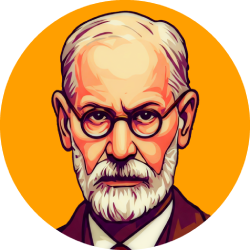Welcome to this article on the construction of the “psychic apparatus”! As a psychoanalyst, I am here to explore with you the foundations of our mind and how it develops over time. In this journey, let’s dive into the preliminary sketches that form the basis of our personality and behavior.
Introduction to the concept of “psychic apparatus”
The term “psychic apparatus” refers to the mental structure that makes up our personality, including aspects such as ID, ego and superego. These components work together to influence our decisions, emotions and interactions with the world around us. It is important to understand that this construction is not static; It evolves over time as we face new challenges and experiences.
When considering the formation of the “psychic apparatus”, we can think of how the first social interactions, especially with our caregivers, shape our perception of ourselves and others. These initial interactions are crucial to the development of healthy self -esteem and the ability to form significant relationships.
Development of ID, EGO AND SUPERAGE
ID is the primitive part of the mind that seeks to meet basic needs and immediate desires. The ego acts as a mediator between ID and reality, helping us to find acceptable ways to express our needs. Finally, the superego incorporates the moral and ethical patterns we have learned, guiding our behavior to align with these principles.
Throughout childhood and adolescence, these components develop and interact in complex ways. For example, a strong ego can help balance ID’s impulses with social expectations, while a well -defined superego guides us toward more ethical choices.
External and internal influences on personality formation
The construction of the “psychic apparatus” is influenced by both external and internal factors. Externally, factors such as culture, family and social experiences play a significant role. Internally, processes such as self-reflection, conscious and unconscious emotions and thoughts are also fundamental.
Considering these influences can help us understand better why we are who we are and how we can grow and change over time. For example, someone who has grown in a very structured environment can have a rigid superego, while someone else with a more flexible childhood may have a more adaptable ego.
Practical application: self -knowledge and personal growth
Understanding the construction of the “psychic apparatus” is not only theoretical; It has practical implications for our personal growth. By recognizing how the different components of our mind interact, we can work on improving our relationships, making more informed decisions, and cultivating greater self -esteem.
Self-reflection practices such as meditation or diary can help increase awareness of our thoughts, feelings and behaviors. This, in turn, can lead to positive changes in our lives, making us more empathic, resilient and capable of dealing with healthy challenges.
In short, the construction of the “psychic apparatus” is a dynamic process that involves the interaction of various parts of the mind. Understanding these components and how they develop can give us valuable insights on who we are and how we can continue to grow and evolve as individuals.


